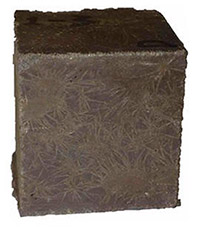Want an extra-terrestrial mansion? How does Mars sound? Recent Northwestern efforts might be bringing us closer.

Researchers created concrete in December that can be made and used on Mars. They intend for it to be used for human settlements on Mars.
This project was led by then-doctoral student Lin Wan who graduated in 2015. She worked with Northwestern civil engineering professor Gianluca Cusatis and post-doctoral researcher Roman Wendner.
The researchers synthesized the concrete from simulated Martian soil and sulfur, an element commonly found on Mars. In order to create it, researchers liquefied the sulfur, added the “martian soil” and mixed it together. They then put it in molds until it cooled and solidified, after which it could be used. They were surprised by the strength of the concrete, which is comparable or higher to that of concrete found on Earth.
Cusatis said he was inspired by a recent NASA project that created lunar concrete based on elements that could be found on the moon, but that he thinks Mars is a better choice to support human life.
“Mars has a general situation in terms of atmosphere, pressure, gravity that is more appropriate for humans compared to [that of the moon],” Cusatis said.
The paper they wrote based on the experiments is currently under peer review.
This is just the latest in a series of discoveries that might just make visiting the Red Planet possible. In September, NASA confirmed recent evidence that water flows on Mars. There are currently two rovers searching for evidence of current and former life.
NASA intends to start sending humans to Mars in the 2030s, while other groups like a non-profit called Mars One hopes to send people as early as 2026. The project will allow these people to build structures for possible Martian settlement.
The NU researchers hope to continue their research in three main areas. One is to see how they can make the concrete more fire-resistant. According to Wan, settlements on Mars would have to be filled with oxygen, which would create a fire hazard because sulfur is flammable. They also hope to test and see what chemical reactions allowed the sulfur to hold the materials together. They additionally want to implement this material in 3D printing and possibly use this method to build structures.